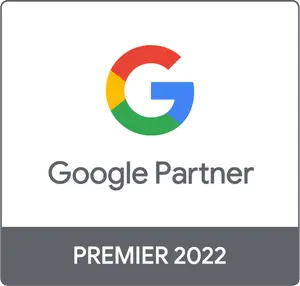The hardest step to take when launching a marketing campaign is the first one. Once that initial spark of inspiration hits, it's often difficult to organize your thoughts and decide how to organize your campaign.
If you're running into a bunch of ideas but aren't sure where to start with your marketing initiatives, we recommend taking these 5 easy steps to define your marketing goals and get your campaign off the ground.
1. Set a budget and define KPIs
Determining your budget and writing clear key performance indicators (KPIs) is the first thing you should do before launching an advertising campaign.
To set your budget and KPIs, We recommend creating a dynamic document that you can adjust as the campaign progresses. Your budget may change throughout the campaign, and at some point, it may be necessary to update the KPIs you established at the beginning of the campaign.
Some KPIs you should consider during a marketing campaign are CPL (Cost per Lead), conversion rate, and ROMI (Return on Marketing Investment), among others.
Once you've established your budget and KPIs, you can easily track the progress of your campaign while ensuring you're staying within your budget.
2. Find your target audience
The next step in launching your campaign is deciding who you want to focus your efforts on, and the best way to do this is to determine your target audience and design your buyer persona. This means researching the interests, online/personal/professional behavior, motivations, and concerns of your potential buyer profile.
There are several strategies you can use to find your target audience and define your buyer persona. We suggest you examine and survey your current customers to track the characteristics of your existing buyers and followers, as well as conduct market research and analyze your competitors.
It's a good idea to create several personas, each representing different segments of your overall target audience. This way, you can refocus your efforts based on the type of profile you want to target with a given campaign.
Finally, remember that target audiences are dynamic and can change over time, so you should review, reevaluate, and revise your strategy frequently.
3. Decide where to focus your geolocation efforts
The next step in defining your marketing objectives is to focus on a geographic target. While the ideal would be to sell your product or service worldwide, attempting this from the outset is unrealistic and will likely result in a waste of resources.
The best geolocation strategy is to start small and then expand. Focus on a small geographic area, perhaps where your company is located or a place where you already know your brand has been successful, and grow from there.
You can always expand over time, and having a clear idea of where to focus your geolocation efforts is one of the best ways to get the most out of your budget and not waste money and time on unrealistic initiatives.
4. Build your value proposition
Building a value proposition is one of the most important steps you can take to cultivate your brand and attract customers in a marketing campaign. A value proposition is a simple, concise statement that explains to your potential customers why they should choose your product or service.
A simple formula to generate a value proposition (which can then be personalized) is “what you do + to whom + how + why”. In short, tell your audience why what you do can make their lives easier.
Your value proposition should clearly explain what you can offer your customers, and ideally, it should also highlight what differentiates you from your competitors. This message should be promoted on your website and social media, as well as in your ads and campaigns.
5. Design a call to action
Finally, you need a call to action (CTA) to convince customers to take action when they see your ads or content. What do you want them to do when they click on your ad or read one of your social media posts?
CTAs should be geared toward conversions, meaning a customer registers, purchases, or subscribes to your page. The type of CTA you use depends on the channel where the content is shared, so be sure to write different CTAs for your website, social media, and ads.
With these 5 simple steps, you can define your marketing objectives and launch a successful campaign. And remember, a good marketing campaign starts with a good marketing department. If you want to create the strongest marketing department possible, Download our list of 25 stocks that you can take to build a strong digital marketing department.

Founder of PaidStrategy and Performance Marketing Specialist.
Over 10 years of experience in Performance Marketing. Expert in achieving goals through analysis and strategy management with internal teams and clients. Her two superpowers? Asking the right questions and moving from chaos and improvisation to order and planning.






